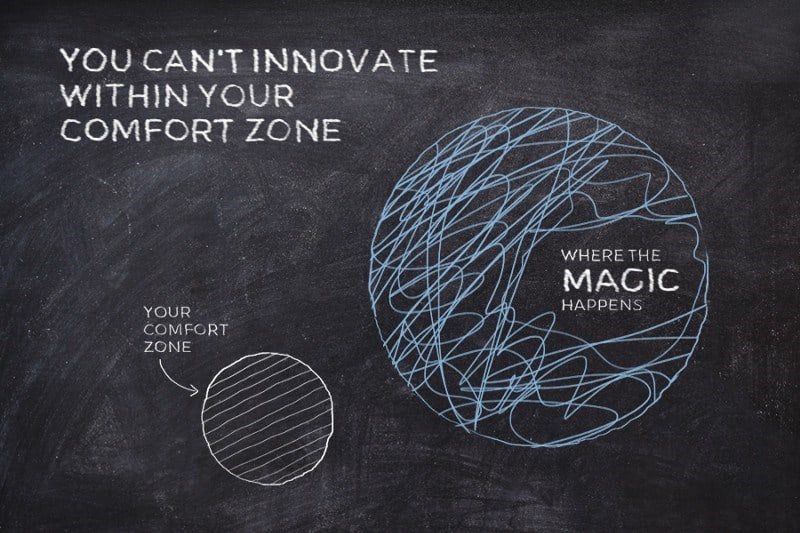Table of Contents
A good, blameless feedback culture is essential for working together efficiently as it forms healthy relationships, fuels personal and professional growth, and aligns us with common norms. Feedback is one of the cornerstones of company culture.
All that said I’ve found that giving good feedback is quite problematic for most of the people (me included!). There’s a social stigma to giving so-called constructive feedback (see, even the name is somewhat of a euphemism), we feel we’re expected to be nice to each other, and surely telling someone they were wrong is not nice. We also tend to be way too simple and not specific when giving praise – no, a simple “well done” is usually not considered as useful feedback.
Let me share with you a few key points about giving useful feedback. I promise it’s all easy and trivial, you just need to consciously practice it.
The how
One of the most important things is getting buy-in for providing feedback. That gives back some of the control to the recipient and helps in having a more open mindset compared to unsolicited feedback. Simply ask if the other party is open to talking about certain topics. Give some context so they can decide. E.g. “May I share some thoughts about the daily standup we had today?”
Be objective and be specific. These support each other, generalization tends to lead to giving feedback on perceived character traits which is a huge anti-pattern (“You always commit bad code.”).
There are a few feedback models out there, what worked the best for me is the SBI (Situation – Behavior – Impact) model. This helps in giving enough context and specificity and being objective. An example: “During the standup today you didn’t mention you were blocked in your work and by this we missed our chance to deploy today, resulting in a delay in delivery.”
- Don’t use the feedback sandwich technique (starting with a compliment, then negative feedback, then an optional compliment again). Unfortunately, it’s still something certain coaches suggest – my advice is that it’s not OK. There’s a reason some call it sh*t sandwich. It shows that you’re not confident in your communication and gives mixed signals, practically killing the actionability of your feedback.
- Don’t include suggestions in your feedback! That’s the next step, but it’s not part of the feedback. It’s very easy to slip into this anti-pattern: “Why didn’t you just use library X? That would make so much sense”. First, this is not feedback, this is a question, second, it’s not objective but you’re talking about your opinion, not the other person’s behavior and its effect.
- Follow the SBI model even for praises! We tend to oversimplify positive feedback. A pat on the shoulder, a thumbs-up, or a ‘nice job!’ has its place and value but the point of positive feedback is more than just recognition: it’s also to make the other person understand what exactly went well in what context and how to repeat that in the future. It’s much nicer to hear “By helping me out with data about the costs during my presentation yesterday we successfully convinced the board to fund our roadmap, thank you for that!” vs. “Thx for the help!”
- It’s even better to focus on data than behavior (if you can).
- Always leave room for the other party to express their thoughts on the matter and even disagree. You can facilitate this by asking how they feel about the issue.
- Make sure to agree on a course of action together. It’s not enough to drop your feedback and leave. You can help guide this process but the ownership lies with the recipient of the feedback (and yes, they can choose not to take action but they should be clear about that and their reasons). Ask guiding questions like “What are our action items here?” or “How can we make sure next time you feel safe to talk about your blockers during standup?”.
- Remember I said don’t generalize? Well if it’s positive feedback it can actually help and encourage if you talk about patterns in the recipient’s behavior. “I’ve noticed that you give awesome presentations lately, for example, this last time about Kubernetes….”
- It’s completely OK to talk about your feelings in the situation you’re describing, just make sure you’re explicit about them being feelings and not facts. “When you interrupted me during my presentation last Tuesday I felt really disrespected and undervalued” (v.s. “You don’t respect me”).
The when
- Timely feedback is key. Give feedback as soon as you can – hopefully, the same day the event that you’re giving feedback about happened. Why? First, both of you still have the context fresh in your minds, second, this way a mental connection is formed between action and reaction.
- Unless you have good experience in it don’t give instant feedback. Make sure you give yourself some breathing space and time to consider how you want to deliver your message. This is especially true for emotionally loaded situations.
- As a rule of thumb praise publicly and criticize privately. Of course, it’s completely OK to repeat praise in a private setting and rephrase/clarify it.
Finally, giving good feedback is as much about forming the habit as skills. Make sure you practice it, I guarantee you can find good occasions almost every day if you look closely.
Feedback Frameworks
The Situation-Behavior-Impact (SBI) framework
The SBI model is a straightforward and effective framework for providing clear and specific feedback. It’s especially useful in professional settings to help individuals understand the effects of their actions and encourage positive change. Let’s break down each component of the SBI model:
Situation
- Description: Begin by describing the specific situation where the behavior occurred. This should be factual, objective, and devoid of interpretation or judgment.
- Example: “In yesterday’s team meeting, when we were discussing the project timeline…”
- Purpose: Setting the context helps the recipient recall the specific event and understand the relevance of the feedback. It’s about grounding the feedback in a real, concrete example.
Behavior
- Description: Detail the exact behavior you observed. It’s important to focus on observable actions, not on perceived intentions or character traits.
- Example: “I noticed that you interrupted several colleagues while they were presenting their ideas.”
- Purpose: Focusing on observable behavior rather than interpretations or judgments helps to prevent the feedback from feeling like a personal attack. It keeps the conversation objective and focused.
Impact
- Description: Explain the impact of the person’s behavior on you, the team, or the project. This should cover both emotional impact and practical consequences.
- Example: “This caused some team members to feel unheard and discouraged, and we missed out on potentially valuable contributions to our discussion.”
- Purpose: Discussing the impact helps the recipient understand the consequences of their actions. It links their behavior to real outcomes, which can be particularly motivating for change.
Benefits of the SBI Model
- Clarity and Specificity: By breaking down feedback into these three components, the SBI model helps to ensure that feedback is specific and clear. This specificity makes it easier for the recipient to understand the feedback and take appropriate action.
- Objectivity: Focusing on specific situations and behaviors helps to keep the feedback objective and prevents it from being perceived as a personal attack.
- Actionable: By clearly linking behavior to its impact, the SBI model provides actionable insights. The recipient gets a clear understanding of what actions to continue, change, or stop.
- Reduces Defensiveness: Since the feedback is specific, contextual, and focused on behaviors rather than personal traits, it is less likely to elicit a defensive response.
Effective Use of the SBI Model
- Timeliness: Providing SBI feedback soon after the observed behavior ensures that the details are fresh and relevant.
- Empathy: Delivering feedback with empathy and concern for the recipient’s growth can foster a more receptive environment.
- Dialogue: Encouraging a two-way conversation during feedback allows for clarification and mutual understanding.
The SBI model is a powerful tool for providing constructive, targeted feedback that can lead to meaningful improvements and professional growth.
The “Praise, Problem, and Potential” model
It is an alternative framework for providing feedback. Here’s an overview of each component:
- Praise: This part of the feedback focuses on what the individual has done well. It’s important to be specific and genuine when giving praise to ensure that it is meaningful and impactful. By recognizing and appreciating the positive aspects of an individual’s performance or behavior, you set a constructive tone for the feedback session.
- Problem: In this step, you address areas where the individual has room for improvement. It’s crucial to be clear and specific about the issue, focusing on behaviors or outcomes rather than personal traits. Framing problems in a way that is objective and based on observable facts helps to keep the feedback constructive and prevents it from becoming personal or emotional.
- Potential: The final component involves discussing the individual’s potential for growth and improvement. This is where you can suggest ways to overcome the problems identified, set goals for future performance, and encourage development. Highlighting an individual’s potential helps to end the feedback session on a positive and forward-looking note, emphasizing growth and development rather than dwelling solely on past mistakes or shortcomings.
This model is effective because it balances positive reinforcement with constructive criticism, encouraging improvement while acknowledging strengths. By ending with a focus on potential, it leaves the individual with a clear sense of how they can progress and develop, which can be motivating and empowering. This approach is particularly useful in environments where ongoing learning and development are valued.
The HEAR framework
The H.E.A.R. framework is a feedback model developed at Harvard University, designed to facilitate effective and constructive feedback in various settings, especially in educational and professional environments. The acronym HEAR stands for:
Hedge Your Claims
- Principle: Feedback should be presented with humility and an understanding of its subjective nature.
- Application: Use language that indicates you are sharing a perspective, not an absolute truth. Phrases like “I might be missing something, but…” or “From my point of view…” can be useful.
- Purpose: This approach prevents the feedback from coming across as accusatory or absolute. It leaves room for a dialogue and acknowledges that the feedback giver’s perspective is one of many.
Emphasize Agreement
- Principle: Finding and highlighting common ground can create a positive and collaborative atmosphere.
- Application: Begin with areas of agreement before moving into more contentious topics. For instance, you could say, “We both agree that the project’s success is our top priority, and I think there are ways we could enhance our approach.”
- Purpose: This step fosters a sense of partnership and shared goals, making the recipient more receptive to the feedback.
Acknowledge the Other Side’s Argument
- Principle: Recognizing and respecting the recipient’s perspective is key to constructive feedback.
- Application: Show that you have considered their viewpoint, perhaps by saying, “I understand that you had limited resources, and that impacted your decision.”
- Purpose: This acknowledgment shows empathy and respect, making the recipient feel heard and understood, which can reduce defensiveness.
Reframe to the Positive
- Principle: Focus on solutions and opportunities rather than dwelling on problems.
- Application: Instead of just pointing out what went wrong, suggest constructive ways to move forward. For example, “While this approach didn’t work as expected, I believe with some adjustments, we can achieve better results next time.”
- Purpose: This reframe encourages a growth mindset, directing the conversation towards development and improvement rather than blame or criticism.
The HEAR model is effective because it encourages a balanced, respectful, and solution-focused approach to feedback. By incorporating empathy and a positive outlook, it can transform feedback sessions into productive and encouraging experiences that promote growth and collaboration.




